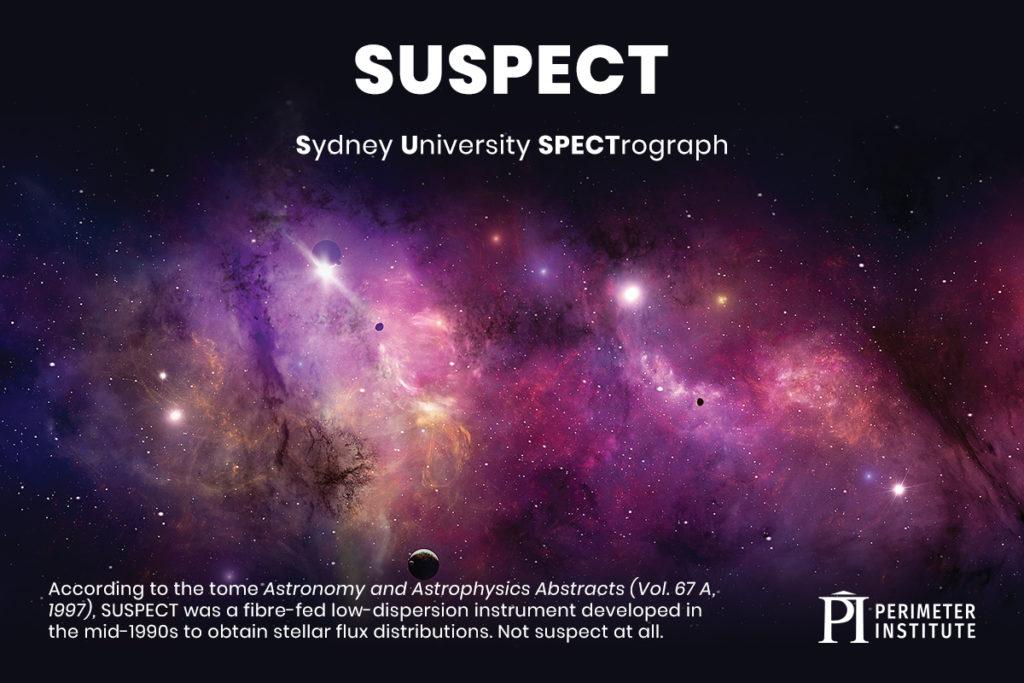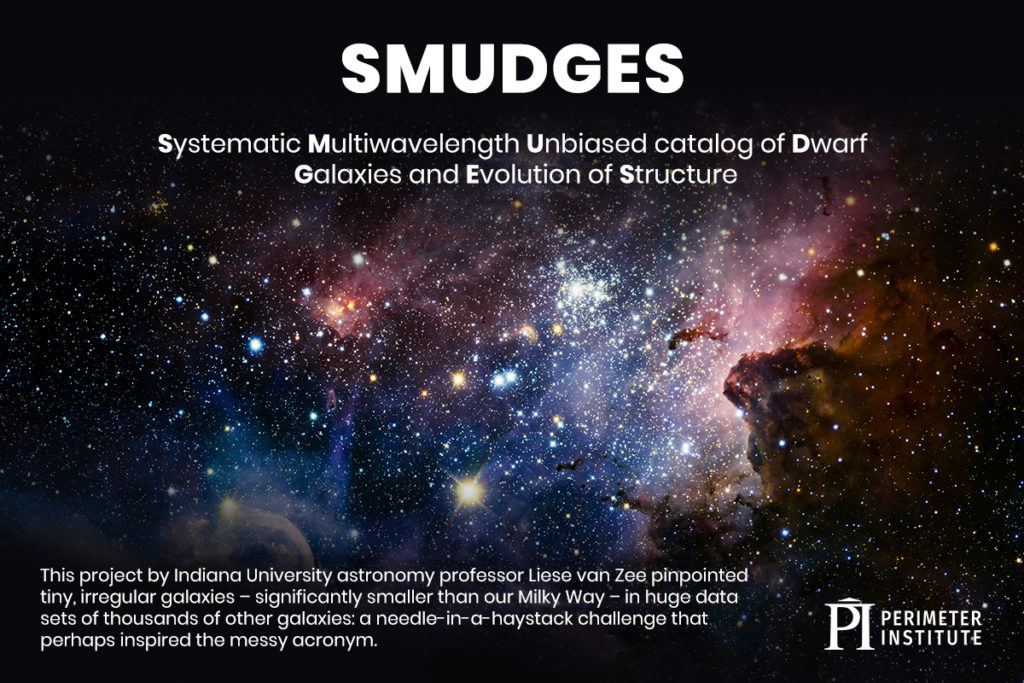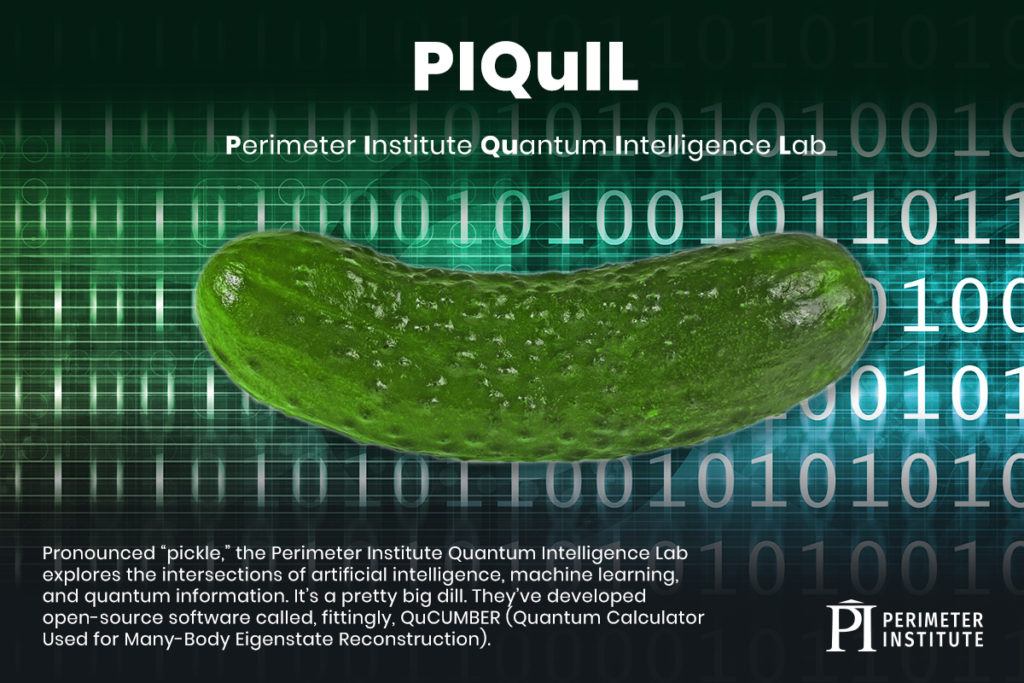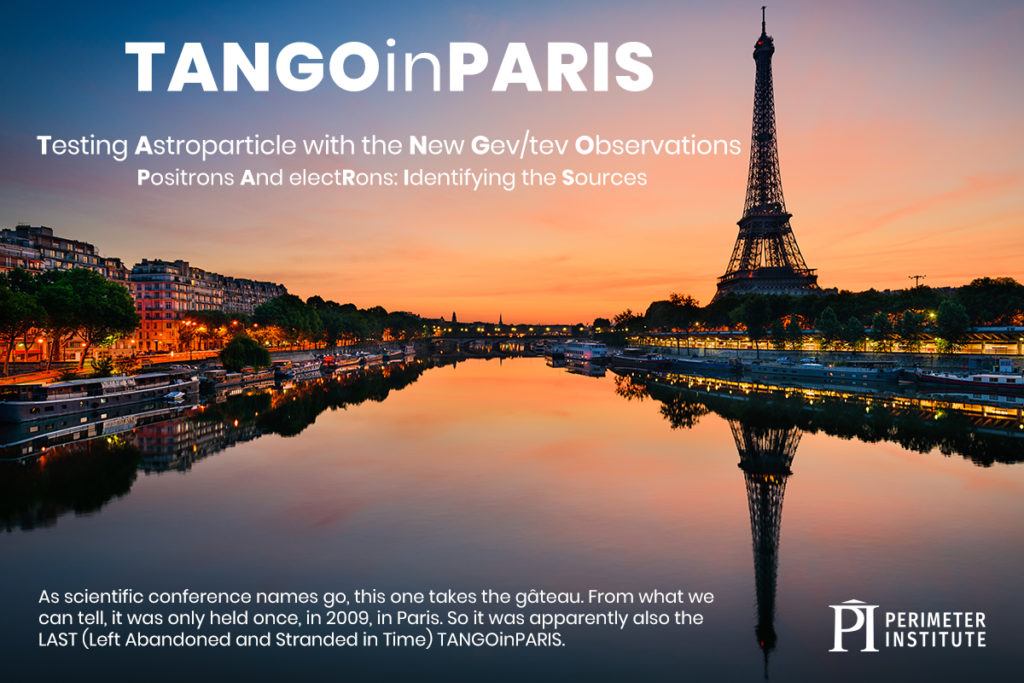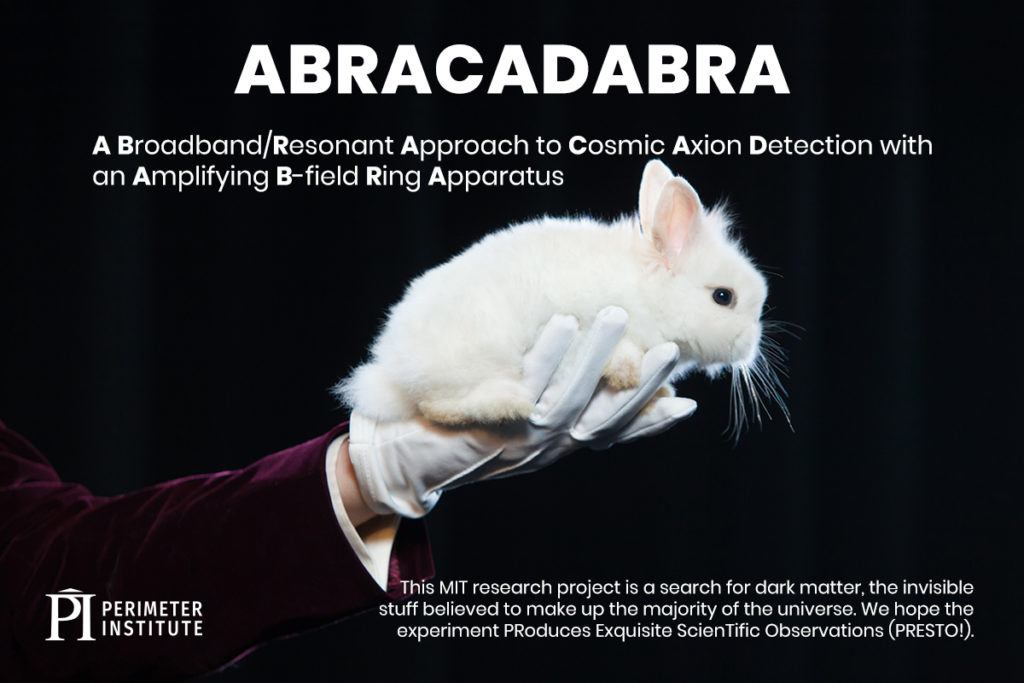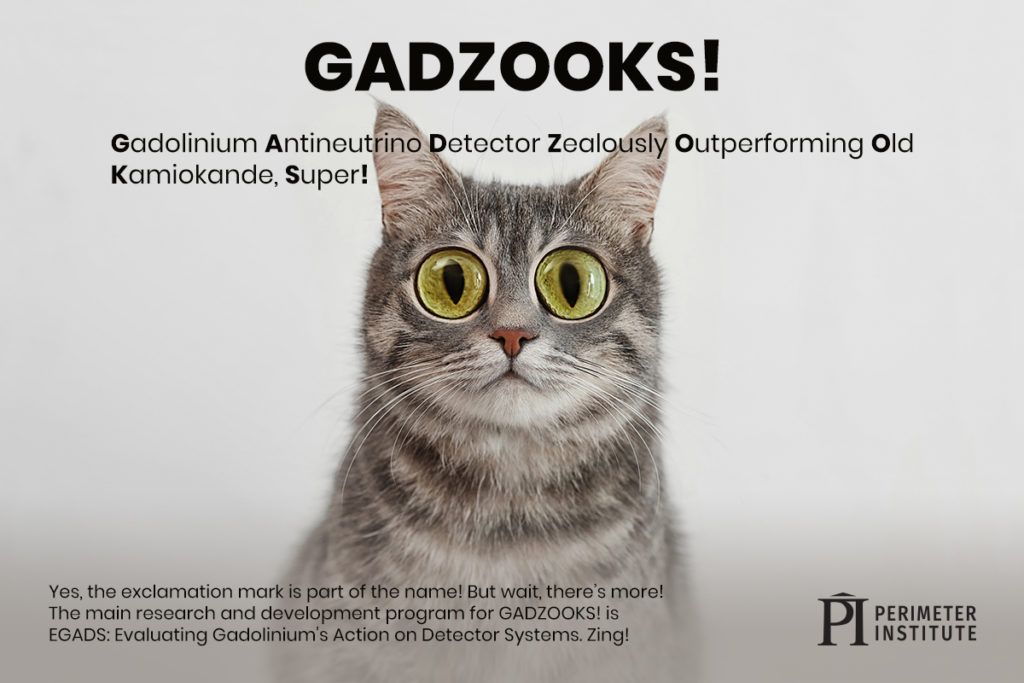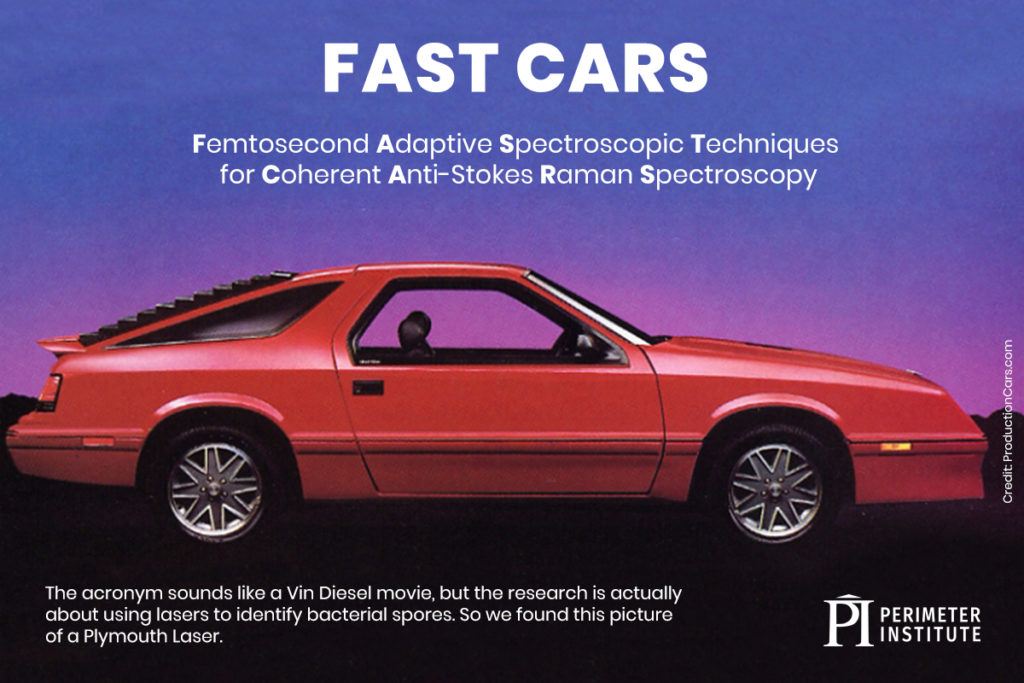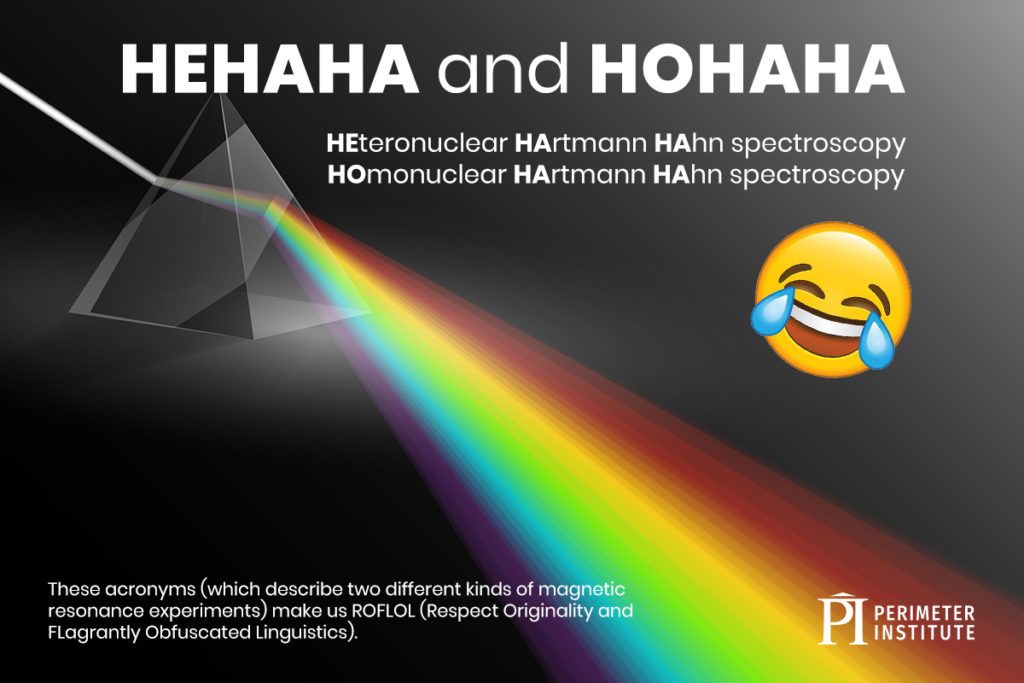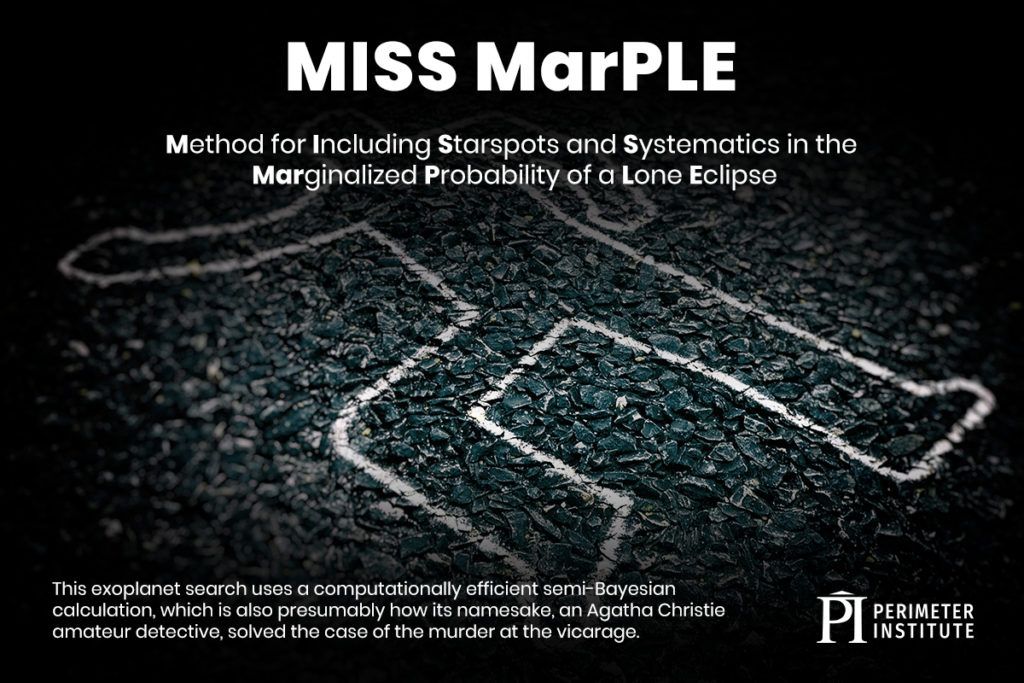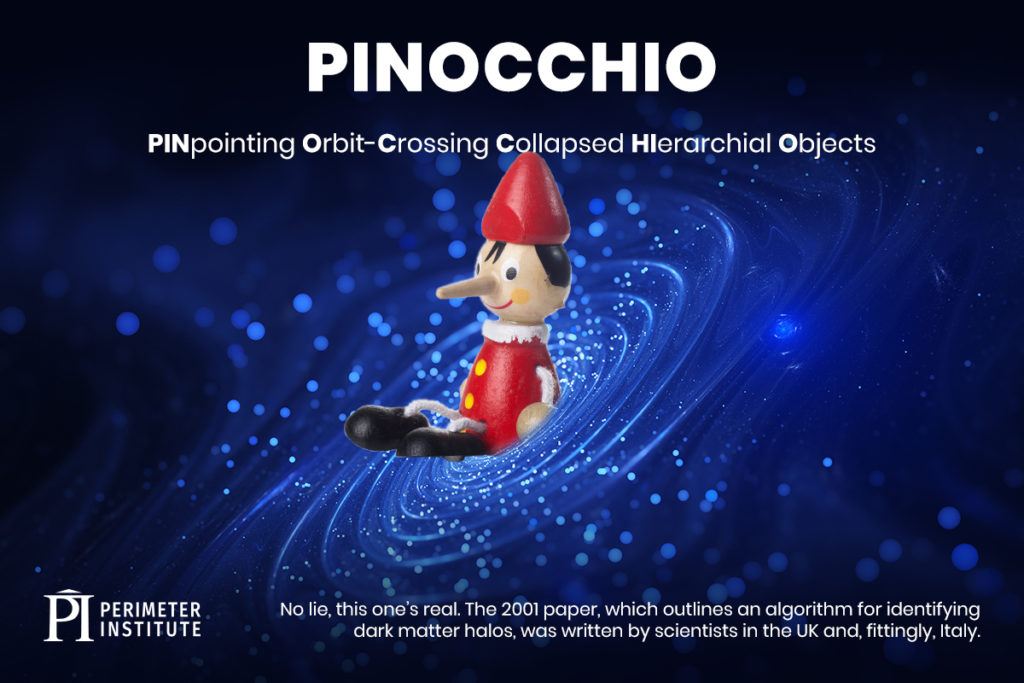Science is full of big words and big ideas. That’s great, until you need to talk about them quickly. Enter a sadly overlooked, and we suspect highly competitive, subspecialty in physics: creating hilarious acronyms.
Now, these acronyms fulfill an important purpose: each is intended as a handy alternative to spelling out long, complicated names of concepts, chemicals, and Latin-laden mouthfuls.
But acronyms themselves can present a challenge when they become an alphabet soup of seemingly random letters.
To make things more memorable, some scientists get playful. Some get downright goofy. We compiled some of our favourites from physics and astronomy, with a much-appreciated assist from DOOFAAS (Dumb Or Overly Forced Astronomical Acronyms Site).
TL;DR: STEM acronyms LOL.
Learn more about PIQuIL.
Learn more about ABRACADABRA.
Don't let the name fool you. This is serious research, as highlighted in Nature.
Further exploration
About PI
Perimeter Institute is the world’s largest research hub devoted to theoretical physics. The independent Institute was founded in 1999 to foster breakthroughs in the fundamental understanding of our universe, from the smallest particles to the entire cosmos. Research at Perimeter is motivated by the understanding that fundamental science advances human knowledge and catalyzes innovation, and that today’s theoretical physics is tomorrow’s technology. Located in the Region of Waterloo, the not-for-profit Institute is a unique public-private endeavour, including the Governments of Ontario and Canada, that enables cutting-edge research, trains the next generation of scientific pioneers, and shares the power of physics through award-winning educational outreach and public engagement.
You might be interested in



